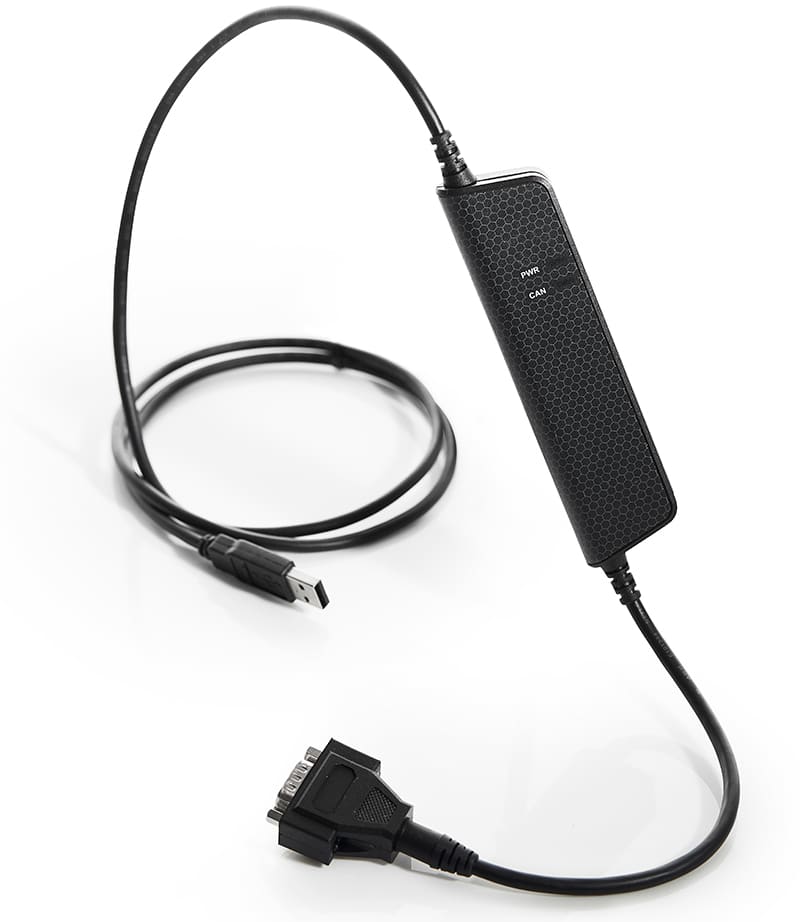Formula Student contender, Team Tallinn, combines the expertise of students from Tallinn University of Applied Sciences and Tallinn University of Technology, both situated in the Estonian capital on the shores of the Baltic Sea. A decision in 2019 to take part in Formula Student’s driverless (DV) category saw the team split in two in order to compete in both the DV and electric (EV) Formula Student challenges.
News
Kvaser USBcan Pro solves Estonian driverless team’s CAN challenges

Tauri Tammaru is Team Tallinn’s driverless car team captain and chief engineer: “The DV team consists of 11 members. Compared to other teams we are a very small group and all of us are bachelors’ students and self-taught in robotics. Our interest in the subject combined with Estonian stubbornness is what drives us forwards!”
Kvaser sponsored Team Tallinn’s DV group in 2018 with a Kvaser Leaf Light HS v2 that continues to be used regularly: “The Kvaser Leaf Light proved its reliability before in competitions when our custom-made CAN interface broke down.” The team has used its 2018 FEST18 car as the basis for DV development. While little has changed on the base car, the autonomous system components have been replaced many times to make the car lighter and more reliable. Kvaser was delighted to get involved in 2022, providing the team this time with a Kvaser USBcan Pro 2xHS v2 CB, a bare circuit board version of our USB to dual-channel CAN or CAN FD interface with scripting capability.
Tammaru explains the need for the Kvaser USBcan Pro 2xHS v2 CB:
“One of our core problems was the interface between CAN and the computer interface. We self-developed a PCB with CAN IC that worked great with an MCU as a processor, but did not work properly with computers as the processor. Now that we have used Kvaser’s USBcan Pro 2xHS v2 CB for a few months, all of the interface problems between the computer and CAN bus have been resolved and there are no dropped frames or bus errors. The Kvaser USBcan Pro 2xHS v2 CB connects to our master PC and offers 2 CAN channels. This is great because we can connect to two different CAN bus lines with different speeds (1 Mbit/s and 500 Kbit/s).”

Aside from being the automotive standard, Tammaru confirms that DVs commonly choose CAN for its noise tolerance and built in CRC. With its small size and galvanic isolation, the Kvaser USBcan Pro 2xHS v2 CB provides additional system integration benefits:
“The Kvaser USBcan Pro 2xHS v2 CB promises quick and easy setup and it delivers! Just connect the USB to the computer and the CAN interfaces appear in the computer. As we are using Ubuntu to run our software, we opted to configure the CAN interfaces with the SocketCAN library in combination with the ROS driver which converts raw data to messages using the CAN databases.”
So how did they do? Tammaru is modest about the team’s results from the 2022 race season, despite achieving multiple 1sts in the Formula Student events they attended in the Czech Republic, Italy, and Hungary:
“This year we managed to get our driverless car to go the fastest it has ever been, reaching speeds up to 50km/h on an unknown track. It was a new top speed for us by far and it was the first time I felt that we had achieved something really special.”
Congratulations Team Tallinn, that Estonian stubbornness sure paid off!
To get a sense of what their DV race car looks like in action, take a look at their testing video:

Which Kvaser products did FS Team Tallinn use?
Kvaser’s USBcan Pro 2xHS v2 CB is a bare circuit board version of our USBcan Pro 2xHS v2 dual channel CAN or CAN FD interface with scripting capability. The USBcan Pro 2xHS v2 CB is supplied ‘bare board’ i.e., without a housing, and can thus be built into any system. The Pro version is shipped with Kvaser TRX, a lightweight development environment that lowers the bar when starting out programming the device.
The Kvaser Leaf Light HS v2 represents one of the easiest and lowest-cost methods of connecting a computer to a CAN bus network. With its USB 2.0 compliant connector and 9-pin D-SUB connector, the Leaf Light HS v2’s sleek, ergonomically designed housing is both robust enough for everyday use and small and flexible enough to be used in space-constrained applications. Galvanic isolation is standard.

Who is involved?
Formula Student Team Tallinn
https://www.formulastudent.ee/en/
Kvaser
https://www.kvaser.com
More on Formula Student
The Formula Student series competitions challenge teams of university undergraduate and graduate students to conceive, design, fabricate, develop, and compete with small, formula-style vehicles. The competitions give teams the chance to demonstrate and prove both their creativity and engineering skills in comparison to teams from other universities around the world.
 linkedin
linkedin twitter
twitter youtube
youtube youku
youku weixin
weixin